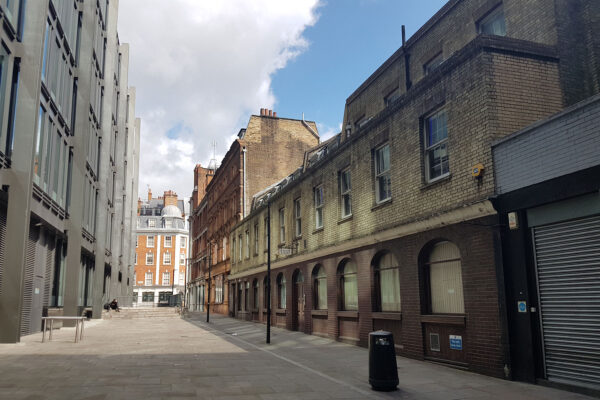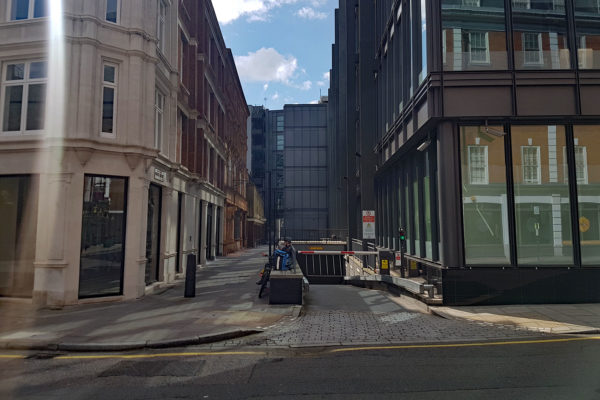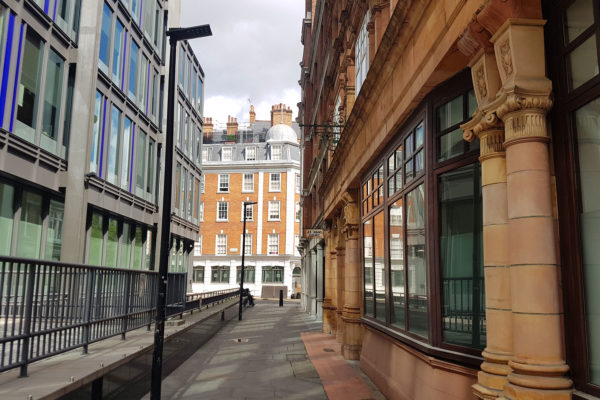This is a modern looking alley that runs off Holborn, but like many of the area can date its origins to medieval London.
At one time this area was all fields, but as the legal inns expanded, the area started to be developed, with buildings initially running along Holborn. There is an indication of an alley like space on the Morgan map of 1676, with buildings fronting Holborn, and fields to the back. As the area built up, it shows up on John Rocque’s map of 1746 as Hand Alley, and now completely surrounded by buildings, although at the time, probably still with smaller back gardens.
The alley name likely derives from the Hand-in-Hand pub, which stood on the corner of the alley with High Holborn. The alley had at one time three pubs clustered together.
By the 1890s, a lot of the buildings had changed from residential to industrial, and there was a metal foundry in the northern end and a warehouse on the southern end owned by the Hulett & Co. Lamp and Meter company.
Booth’s poverty survey of London describes Hand Court as containing ‘small shops’, and ‘old picture and curio shops’. Sadly WW2 saw a lot of damage to the alley, so while the buildings on the western side are entirely modern, the layout of the court itself is relatively as it was in Victorian times.
The main difference is the 1960s addition of an underground car park, and the ramp down to it takes over a large amount of the space in the court, reducing it to mere sideshow to the motorist.
On the eastern side is a row of older 19th century buildings. One main block is appealing, but it turns out that inside is a set of decaying offices and the building may have been built rather cheaply. That contrasts with Number 23 Hand Court which is a richly decorated building. The lower two floors are a terracotta facade, and then red brick above.
There are currently plans to redevelop the entire eastern side of the Court, retaining the terracotta frontage of number 23, but everything else going. This would normally be horrific, but the plans also intend to reintroduce retail shops — probably cafes — along the ground floor, so the alley may once again become a place to loiter in rather than a rather empty expanse to hurry though.










I believe the terracotta-fronted building was the one I used to visit as a teenager in the mid 70s when it was The West Central Club of which Lily Montagu had been President. I recall it was a huge building, I particularly remember that there were two staircases, one a large ornate wooden staircase and the other a metal spiral staircase. Sadly, I never had the nerve to explore the building but it had many rooms for different activities. I took a pottery class there and I recall passing an unlit room that had sewing machines on desks.